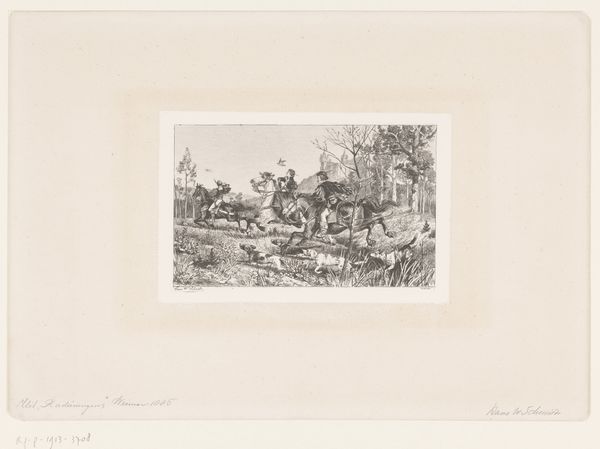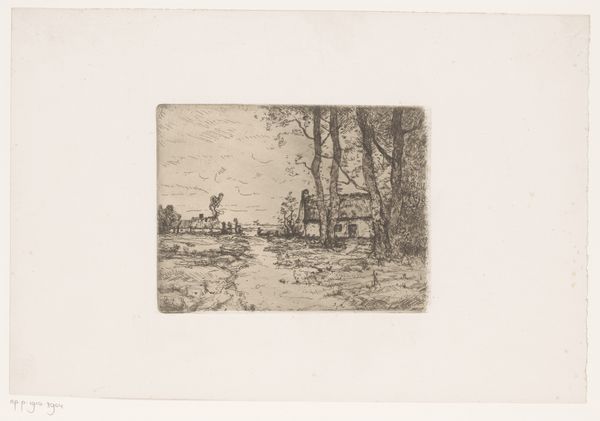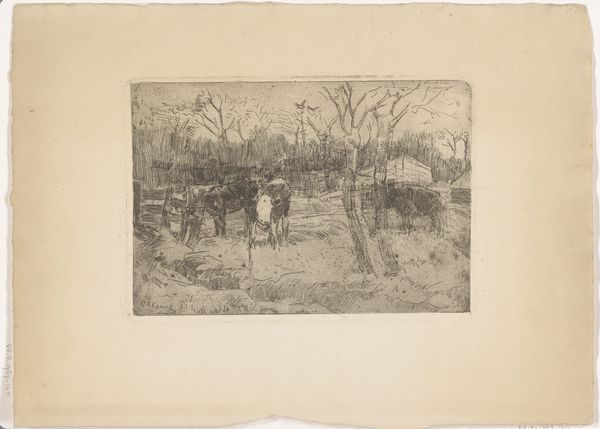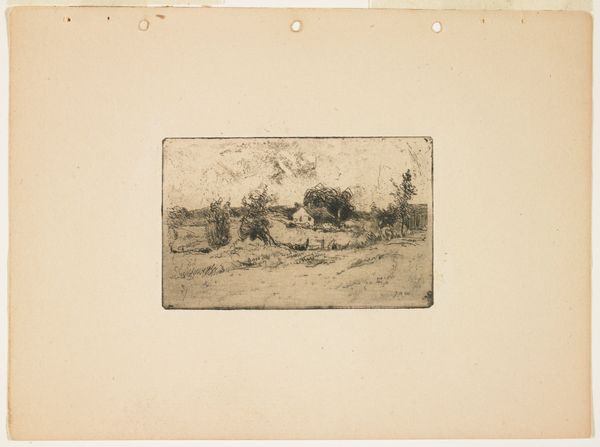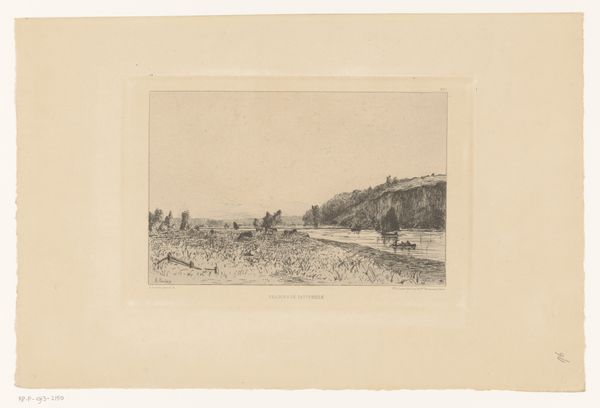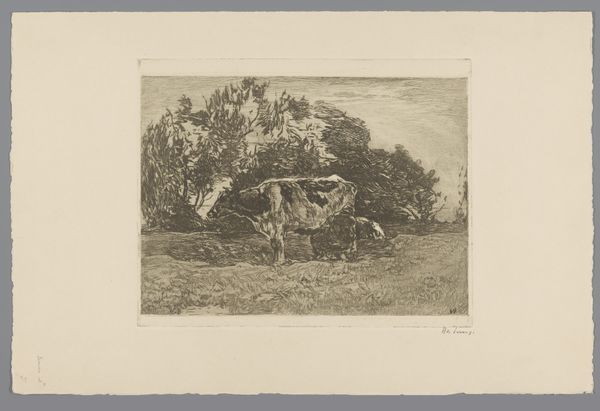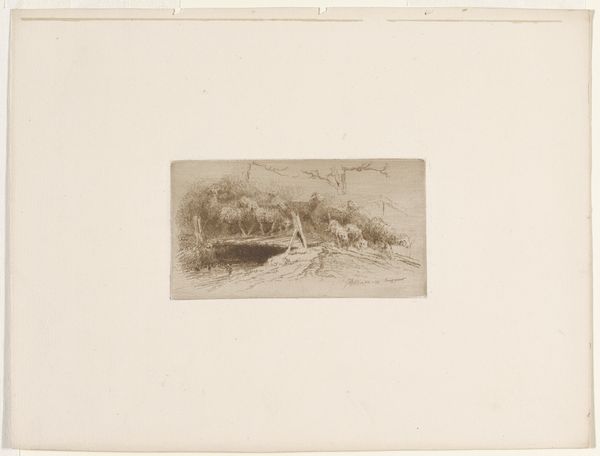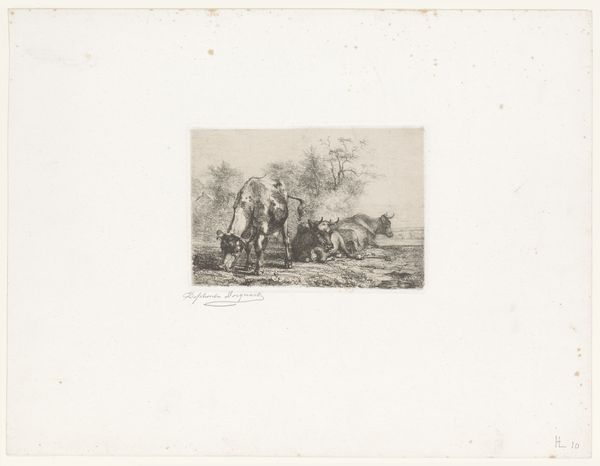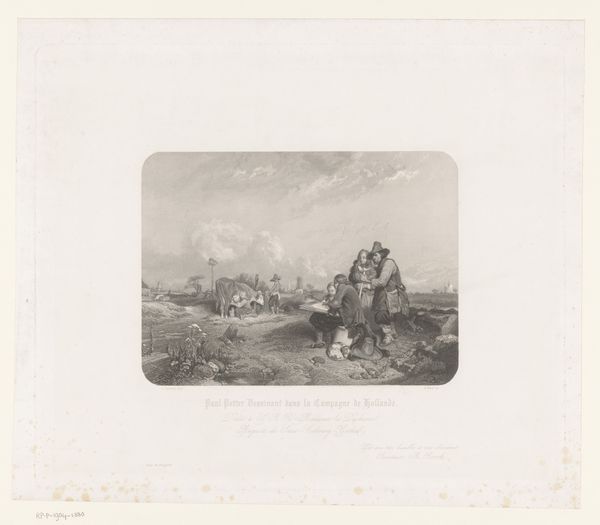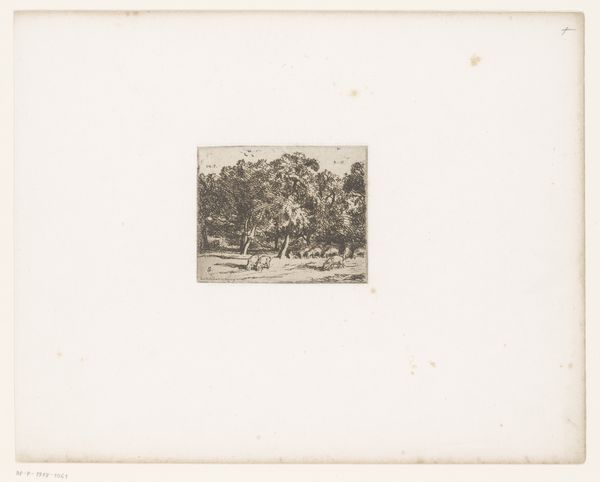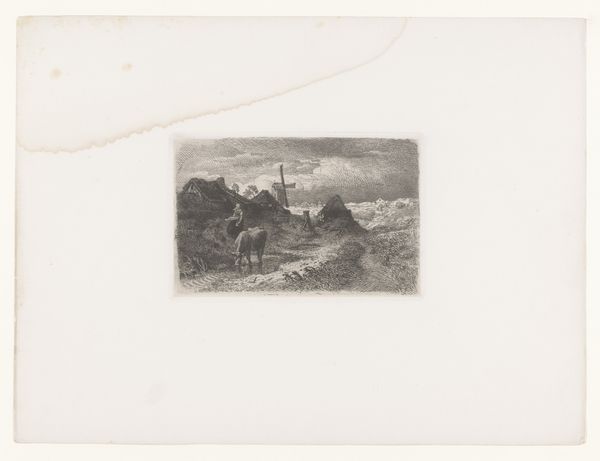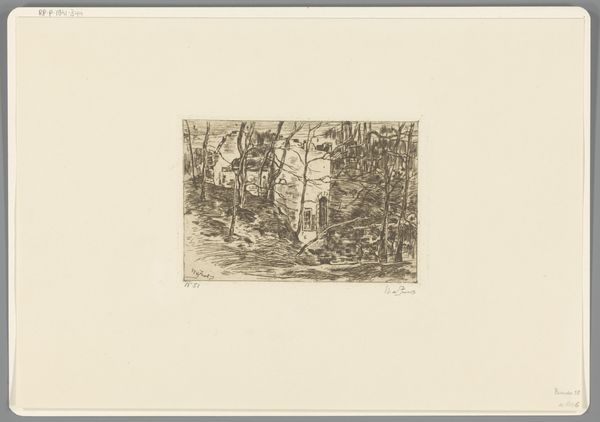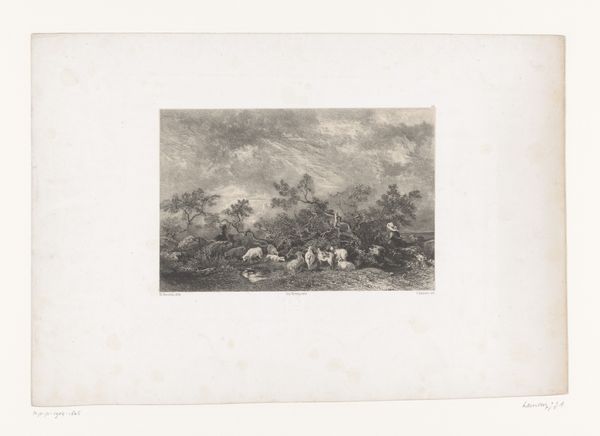
drawing, print, paper, ink
#
drawing
#
animal
# print
#
landscape
#
figuration
#
paper
#
ink
#
horse
Dimensions: height 124 mm, width 160 mm
Copyright: Rijks Museum: Open Domain
Editor: Here we have Adolf Eduard Herstein’s "Two Horses by a Trough," made sometime between 1879 and 1932 using ink on paper. The drawing is quite detailed and creates a sense of a busy working landscape. What strikes you about this piece? Curator: The first element I notice is the density of mark-making. Observe how the artist uses varied hatching techniques to delineate form and space. Notice also the compositional tension achieved by contrasting the dark, textured foreground with the relatively less-detailed background. What do you make of that contrast? Editor: I see it creates a depth that really pulls me into the landscape. It’s interesting that the trough is so central to the composition, acting almost as a visual anchor. Is there anything specific in the relationship between the figures and the setting? Curator: Yes. Consider how the formal elements like line, shape, and value contribute to the overall structure of the image. The figures and setting are rendered using the same type of marks; see how this weaves a web across the plane, uniting different components of the depicted subject? Editor: That's a great way to see it; they’re all just forms communicating on the page! So the subject depicted becomes less relevant than how the different visual weights interact? Curator: Precisely. Think of it as a carefully calibrated system of visual relationships. Editor: Thank you for helping me see past the representational aspect of this print, to discover a deeper appreciation for its formal language. Curator: My pleasure. Hopefully now you find the artistic intention of this piece to be visually apparent.
Comments
No comments
Be the first to comment and join the conversation on the ultimate creative platform.
